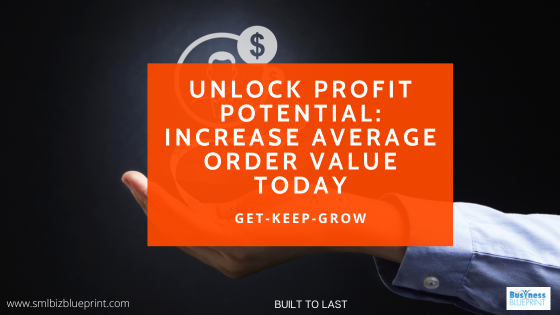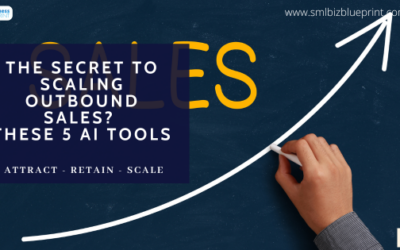Welcome to the business world, where success isn’t just about making sales but maximising the value of every transaction.
In this blog post, we’ll explore a core idea that can transform your business – increasing the Average Order Value (AOV).
We’ll show you why this matters and guide you on how to do it effectively.

As a business owner, you understand the importance of profitability, and increasing your AOV is one powerful way to achieve it.
The Power of Increasing AOV
Regarding profitability, business owners need strategies that make a real impact. Increasing your AOV is a game-changer because it boosts your revenue without requiring a significant increase in customer acquisition costs.
Imagine customers spending more every time they do business with you – that’s what AOV can do for your bottom line.
Now, let’s dive into the ten techniques to make this happen.
#1 Upselling Strategies
As a business owner, you should know that guiding your customers toward higher-priced versions or upgrades is smart. Why?
Because it increases the value of each sale.
Consider this scenario: a customer is about to buy a basic product or service, but you offer them a premium option with enhanced features at a slightly higher price. They get more, and you make more. That’s a win-win!
Example: Consider how premium car dealerships offer upgraded models with additional features.
#2 Cross-Selling Success
Cross-selling is all about suggesting complementary products or add-ons.
Imagine you offer a core service, and a customer signs up for it. Now, you suggest related services or additional features.
By doing this, you not only enhance their experience but also increase the total value of their purchase.
Example: A software company selling security solutions might cross-sell training services.
#3 Bundle Discounts Made Easy
Bundling products or services and offering discounts on the package deal can entice customers.
Let’s say you provide various consulting services. Offering a bundle with multiple discounted services encourages customers to buy more than they initially planned.
Example: A restaurant offering a discounted dinner package with a starter, main course, and dessert.

#4 Minimum Purchase Threshold Benefits
Setting minimum purchase thresholds is a clever way to motivate customers to spend more.
If you offer a service, consider providing additional value, like extended support or enhanced features, once customers reach a certain spending threshold.
Example: An IT solutions provider offering premium customer support for clients reaching a specific spending threshold.
#5 Personalization for Profit
Nowadays, data is a goldmine.
Use it to personalise recommendations for your customers.
Customers who see products or services tailored to their preferences will likely make additional purchases.
Example: Netflix’s personalised movie and show recommendations keep viewers engaged and subscribing.
#6 Frequent Shopper Discounts
Rewarding loyal customers is a strategy that pays off. Implement a loyalty program where customers earn discounts or exclusive offers as they do more business with you.
This keeps them coming back and spending more.
Example: Coffee shops often offer loyalty cards, giving customers a free coffee after a certain number of purchases.
#7 Creating Urgency with Limited-Time Offers
Nothing spurs action like a ticking clock. Limited-time offers create urgency.
Customers know they must act quickly to get the deal, often leading to bigger purchases.
Example: A marketing agency offering a special discounted rate for a limited time.
#8 Add-on Services for Additional Value
Offering premium services or warranties as add-ons can boost your AOV.
When customers see the value in these services, they’re willing to spend more to protect their investment or enhance their experience.
Example: An appliance store offering extended warranties for appliances.

#9 Product Customization Opportunities
Let your customers tailor their purchases.
If you provide products, offer customisation options like choosing colours, styles, or specifications. People are willing to pay more for unique, personalised products.
Example: A jewellery store allowing customers to create custom pieces.
#10 Tiered Pricing Strategies
Cater to a wider range of customers with tiered pricing.
Offer different pricing levels with varying features or benefits. Customers can choose the option that best suits their needs and budget, ultimately increasing your AOV.
Example: A software company offering tiered subscription plans.
Steps to assess your business and increase your Average Order Value (AOV):
#1 Analyze Current AOV:
Start by calculating your current AOV. This will serve as a baseline for your efforts to increase it. Divide your total revenue by the number of orders over a specific time period to get your current AOV.
#2 Segment Your Customer Base:
Segment your customers based on their behaviour, preferences, and purchase history. Understand who your high-value customers are and tailor your strategies to cater to their needs.
#3 Implement Upselling and Cross-Selling:
Identify products or services in your catalogue suitable for upselling and cross-selling. Train your sales and customer service teams to promote these options effectively. Consider using AI-powered recommendation engines for online businesses.
#4 Create Bundled Offers:
Develop bundled packages that provide value to customers while increasing their AOV. Ensure that the bundled items are related and make sense together. Offer discounts or special pricing to incentivise customers to choose bundles.
#5 Loyalty Programs and Discounts:
Establish a loyalty program to reward repeat customers. Offer tiered discounts or exclusive perks as customers accumulate points or make additional purchases. Keep customers engaged and coming back for more.
#6 Personalization and Recommendations:
Leverage customer data to personalise product recommendations on your website and in marketing communications. Based on past behaviour, show customers products they are more likely to buy.
#7 Limited-Time Offers and Urgency:
Create a sense of urgency with limited-time offers or promotions. Highlight the savings or benefits customers will receive if they act quickly. Clearly communicate when the offer ends to drive action.
#8 Test and Optimize:
Continuously test and optimise your strategies. Monitor the impact of each technique on your AOV and adjust your approach accordingly. A/B testing can be particularly valuable for online businesses.
#9 Educate Your Team:
Ensure that your sales and customer service teams understand the importance of increasing AOV and are trained in the abovementioned techniques. Consistent messaging is key to success.
By following these action points, business owners can assess their current AOV, identify areas for improvement, and implement effective strategies to increase profitability through higher average order values.
FAQs
Q1: What is the Average Order Value (AOV)?
A1: AOV is the average value of each transaction or purchase made by a customer. Increasing AOV means customers spend more each time they do business with you.
Q2: Why should I focus on increasing AOV?
A2: Increasing AOV boosts your revenue without needing more customers. It’s a profitable strategy that can significantly impact your bottom line.
Q3: How can I implement personalisation in my business?
A3: Utilize customer data to tailor recommendations, offers, and services based on their preferences and past interactions with your business.
Q4: What’s the difference between upselling and cross-selling?
A4: Upselling involves persuading customers to buy a higher-priced version or upgrade, while cross-selling suggests related or additional products or services to complement their purchase.
Q5: Can these techniques work for small businesses, too?
A5: Absolutely! These strategies are scalable and can be tailored to fit the needs of small to medium-sized businesses.
Conclusion
In the competitive business world, profitability is the game’s name. Increasing your Average Order Value (AOV) is a strategy that can significantly boost your bottom line.
By implementing these ten techniques, you can encourage customers to spend more and enhance their experience.
Remember, the key is understanding your customers, using data-driven insights, and continually optimising your strategies for maximum AOV and profitability.
Don’t miss out on more business insights! Subscribe to our newsletter for the latest strategies and tips.
Have questions or want to share your thoughts? Leave a comment below; we’d love to hear from you!
Share this article with your network and help fellow business owners succeed in maximising their AOV and profitability. Together, we can all boost our AOV and thrive in the business world.




